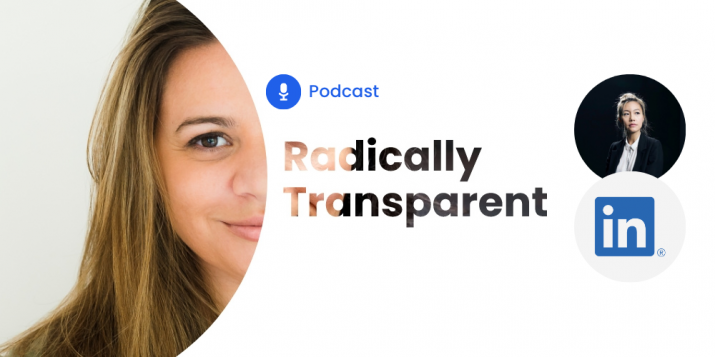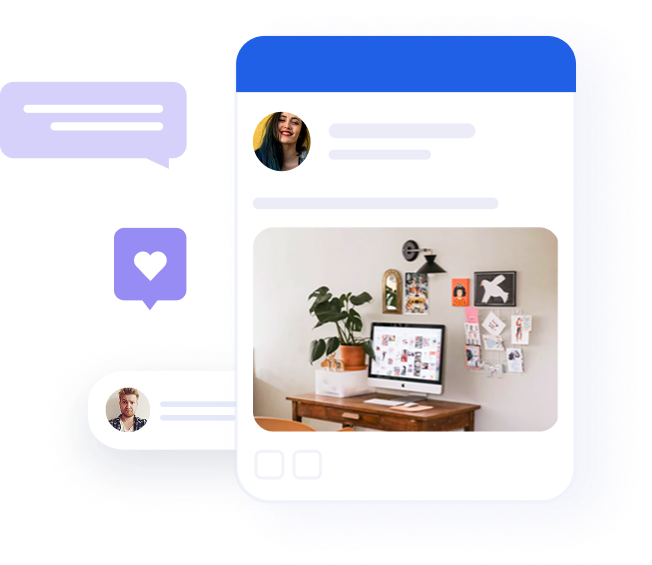
12 ways to write engaging social posts that audiences will love
Table of contents
So, you wrote a great article, crafted social posts, and scheduled them across the networks. Two weeks later, you view your social analytics and see no clicks, no likes, no shares – zero social engagement. What went wrong?
For a moment, think about what makes you engage with a B2B brand’s content. Perhaps you know them personally, share their industry or simply find their posts unique and humorous. Either way, crafting engaging social posts is no easy task – especially in the age when newsfeed algorithms play such a big role in prioritizing popularity over anything else.
Instead of recycling the same old posting techniques, read the list of 12 ways to write fun, exciting, and compelling social posts that your audience will truly care about.
12 Ways to write engaging social posts that audiences will love
1. Spark inspiration
#MondayMotivation is not a dirty word. Capitalize on the various motivational hashtags out there, or create some of your own. People appreciate waking up to some words of wisdom, especially if they come from your company’s leaders and vast experience. Integrating inspirational quotes and phrases into your social posts will produce more motivation from your audience and compel them to take action.
Here’s an example of how Marketo does it with its Fearless Marketing program. Every Monday, you’ll find a new inspirational post coupled with custom hashtags: #Fearless50, #MondayMotivation, and #FearlessMarketer. Notice the use of powerful words for building emotion – they are simple and work.

2. Drive audience interactions
Imagine going on a date with someone who only talks about themselves. Boastful, rude, selfish, you might think? The same rationale applies to social media. Needless to say, social media isn’t a broadcast channel where you can brag all day about your product or service; rather, it’s a place where you need to interact with your audience at all times.
Writing social posts that seek people’s answers, opinions, and feedback can serve as a great conversation starter. You could post a Twitter poll or even link to a Google Survey.
Here’s a great example from HubSpot’s Twitter feed:

3. Use emojis creatively
When it comes to writing fun social posts, emojis are the rulers of the land. They fuel your posts with playfulness and personality. Use their power wisely, and you’ll be able to identify with your audience and appeal to their emotions on a whole new level. Some fun emoji stats:
💬 5 billion emojis are sent daily on Facebook Messenger
📸 By mid-2015, half of all comments on Instagram included an emoji
🍑 Only 7% of people use the peach emoji as a fruit (C’mon! Admit that it looks like a butt)
But hey, don’t substitute every word with smiley faces and hearts, as Larry Kim will tell you, “You’re abusing this tool and look like a cheeseball!”. Just in case, here’s an example from Larry himself – who, when you come to think of it, is a genius emoji marketer who turned the unicorn emoji into his own branded symbol:

4. Keep it simple, silly
You know what they say: don’t tell a story in 30 minutes when you can tell it in 30 seconds. While it may be challenging to encapsulate a super interesting idea in 5 words, give it a try anyway. One short sentence arousing your audience’s curiosity is far more likely to earn you those likes, shares, and clicks.
This is the style you can expect from all-time marketing expert Jeff Bullas. While all he did is copy-paste the article headline into the social posts, any good marketer knows that the headline is the epicenter a great piece.

5. Make lists
This is an infallible hack to make your social content engaging (and readable). Try summarizing the key information of an article, eBook, or webinar into a couple of bullet points. This trick will work marvelously on Twitter and LinkedIn.
Remember to play around with the statistics or any compelling information. If they find your snippet relevant, they will click to read the full piece. Zest is an example of a company that knows how to pull this one off—they created a list of FAQs to grab attention for their new product release.

6. Show empathy
Crafting social posts involves speaking directly to your audience’s biggest needs and pain points. Ask yourself: what’s characteristically challenging to their role or industry – and how can you position yourself as the hero or fixer? Being empathetic can be as simple as using words like “you” or “your” to engage your audiences directly.
The more you know your target audience––and refine your content personas––the better you can appeal to those areas of strain and difficulty. Empathy is a powerful tool, and yielding it can earn you serious points of engagement.
In this post, HubSpot addresses a huge pain point experienced by its customers:

7. Instill a sense of urgency!
Urgency. It’s a powerful persuasion tool that you can easily incorporate into your social posts to prompt a desirable action. Promoting time-sensitive giveaways or telling your audience to “save a spot before tickets run out” are all classic examples of urgency-driven messages. But they don’t have to be as explicit. Creating a sense of urgency could also mean demonstrating your impact or turning a hurdle into an opportunity – as long as you keep the momentum high, urgency will naturally be present.
Here’s a prime example of urgency being used by Similarweb:

8. Emphasize the benefits
This might seem like a no-brainer, but here’s a rule B2B marketers can follow when writing social posts: demonstrate to your audience what it’s in it for them. Rather than writing social posts about how great your content is (“This is a rad article, read it now!”), you can emphasize what the audience will learn from the article and how it can help them with their challenges:
Here’s an example from Outbrain:

9. Flash the numbers
Numbers are a brain’s candy – especially the brains of C-level executives. Using numbers in your social posts reinforces your value to buyers and guarantees to get their immediate attention.
Take the title of this article as an example: ‘12 Ways to Write Engaging Social Posts’. But it was titled, ‘How to Write Engaging Social Posts’? Straight away, the message appears less impactful, less credible, and less structured. When people see a number, they’re naturally conditioned to expect a digestible piece of content, not some unstructured text scroll.
Accelo presents their take on this tactic:

10. It’s OK to be negative
Negative social posts work. Your audience understands that it’s not all sunshine and rainbows out there, so highlighting their failures is OK. Allude to the biggest pitfalls or mistakes made in their industry and make them feel that this is a shared negative experience.
The key is to be direct and explicit – don’t shy away from presenting the facts, even if they’re less pleasing. In fact, humans are psychologically programmed to avoid losses: the frustration associated with losing $5 is greater than the pleasure of finding $5.
Neil Patel is the king of negative marketing – he knows exactly which buttons to press and how to draw readers in by being direct and brutally honest. Take this example:

11. Focus on industry leaders
Marketing isn’t all about tooting your own horn. Making a strong case often involves the help of credible names in the industry. These could be individuals or companies who are considered “thought leaders” on a particular subject and already have a strong social following.
In doing so, you can demonstrate that your opinions are being supported and even implemented by market leaders, which validates your social posts in the eyes of audiences.
Check out this example from Wibbitz:

12. Be a little playful
Don’t take yourself too seriously. A bit of humor and mischief can make your audience laugh and take notice of your social posts. It can be a pun, a hilarious gif or a funny hyperbole, there are plenty of ways to be playful without forcing it.
Take a look at this example from Pardot:

Social posts: It’s all about the engagement
Social posts can make or break your audience engagement. If no one is reacting to your company’s posts, have you really shared them?
The solution is to diversify – try different variations of the same post to test their impact. Perhaps “negativity” works best for your LinkedIn audience, while “empathy” and “playfulness” appeal more to your Twitter audience. You’ll never know which style works best unless you experiment with multiple approaches.
Ultimately, you shouldn’t be relying on gut feelings but rather on data to determine your top-performing messages and allow you to repeat that success. Try our B2B social media management platform, which offers a best-in-class social analytics suite to help you measure, report, and optimize your social posts across all metrics.




